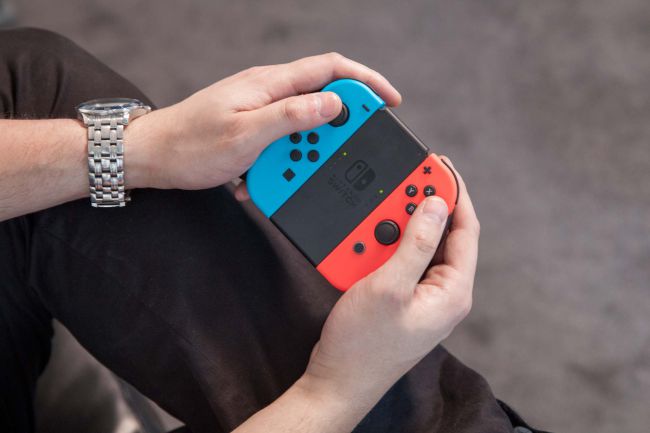Nintendo Switch Joy-Con Drift: Fixes, Issues and What You Need to Know
This Is Kyoto Drift

Ever since the Nintendo Switch launched, there have been a host of problems regarding the system's Joy-Con controllers, chief among them being what is colloquially known as "Joy-Con Drift."
Here's what you need to know about this widespread Switch controller issue, and what to do if you're affected.
What Is Joy-Con Drift?
"Joy-Con Drift" is when the analog stick on your Joy-Con essentially moves on its own, and it's been labeled a "drift" motion because the input that the controller receives isn't instant, but rather slowly accelerates.
The motion can be small and only happen every so often, or the drift can occur every time you even move your analog stick. While Joy-Con Drift is more common on the left controller, there's evidence that it happens in both.
It seems that the issue is caused by dust and dirt becoming trapped under the rubber flap of the analog stick.
Joy-Con Drift Class-Action Lawsuit
The number of people affected (myself included, as well as several Future staff) has actually gotten so high that law firm Chimicles Schwartz Kriner & Donaldson-Smith (CSK&D) filed a class-action lawsuit against Nintendo, alleging "that the joysticks on Joy-Con controllers are defective, leading users to experience drift issues."
If you're experiencing Joy-Con Drift, we recommend that you take part in the lawsuit and explain your situation. You won't lose anything by telling your story, and you may become entitled to some cash if the lawsuit is successful.
Sign up to get the BEST of Tom's Guide direct to your inbox.
Get instant access to breaking news, the hottest reviews, great deals and helpful tips.
Nintendo's Response (Update)
In an interview with Kotaku, Nintendo gave a response on the current situation of Joy-Con drift.
"At Nintendo, we take great pride in creating quality products and we are continuously making improvements to them," a representative from Nintendo told Kotaku. "We want our consumers to have fun with Nintendo Switch, and if anything falls short of this goal we always encourage them to visit http://support.nintendo.com so we can help."
It's not exactly the most helpful response, especially because users have experienced Joy-Con drift even after sending their Joy-Cons in for repair.
However, a recent memo within Nintendo surfaced, seen by Vice Games, that states "Customers will no longer be requested to provide proof of purchase for Joy-Con repairs.” It goes on to say that “It is not necessary to confirm warranty status. If a customer requests a refund for a previously paid Joy-Con repair [...] confirm the prior repair and then issue a refund.”
What To Do If You Have Joy-Con Drift

Apart from taking part in the lawsuit, we recommend a few methods to solve your issue.
Now that Nintendo is accepting repairs of all Joy-Cons, no matter the warranty, the official way to get it done is to send it back to Nintendo.
However, if you'd rather save some time, you can try to fix it yourself. First, start by cleaning underneath the flap of the stick with some compressed air. If that doesn't work, you can go ham with this iFixit guide in order to replace the analog stick.
If you're not satisfied with either method, you could always spring for a Nintendo Switch Pro controller. But if you're not willing to put your money in Nintendo's hands again, maybe go with the PowerA Enhanced Wireless Controller.
You could also do what I did: reluctantly give in and get a new pair of Joy-Cons. Unfortunately, this is just one of several issues that the Joy-Cons have had during its lifespan. But it seems like Nintendo is taking this issue seriously now, which is great, especially with the Nintendo Switch Lite and New Nintendo Switch coming down the pipeline.

